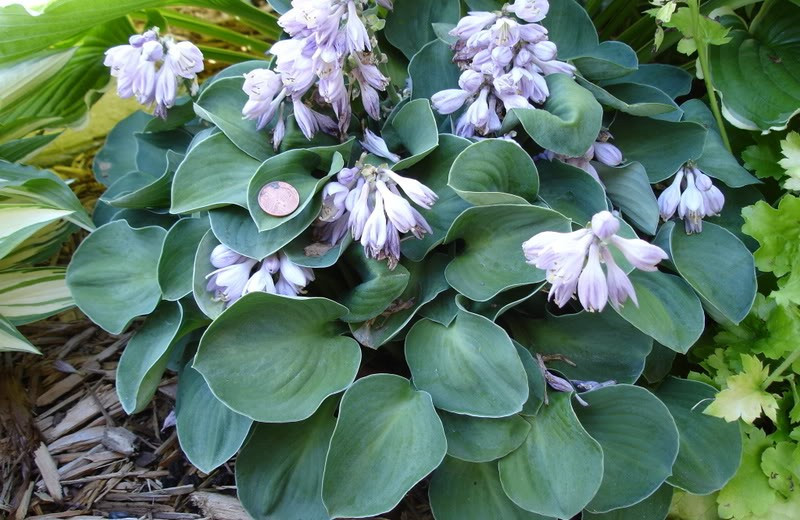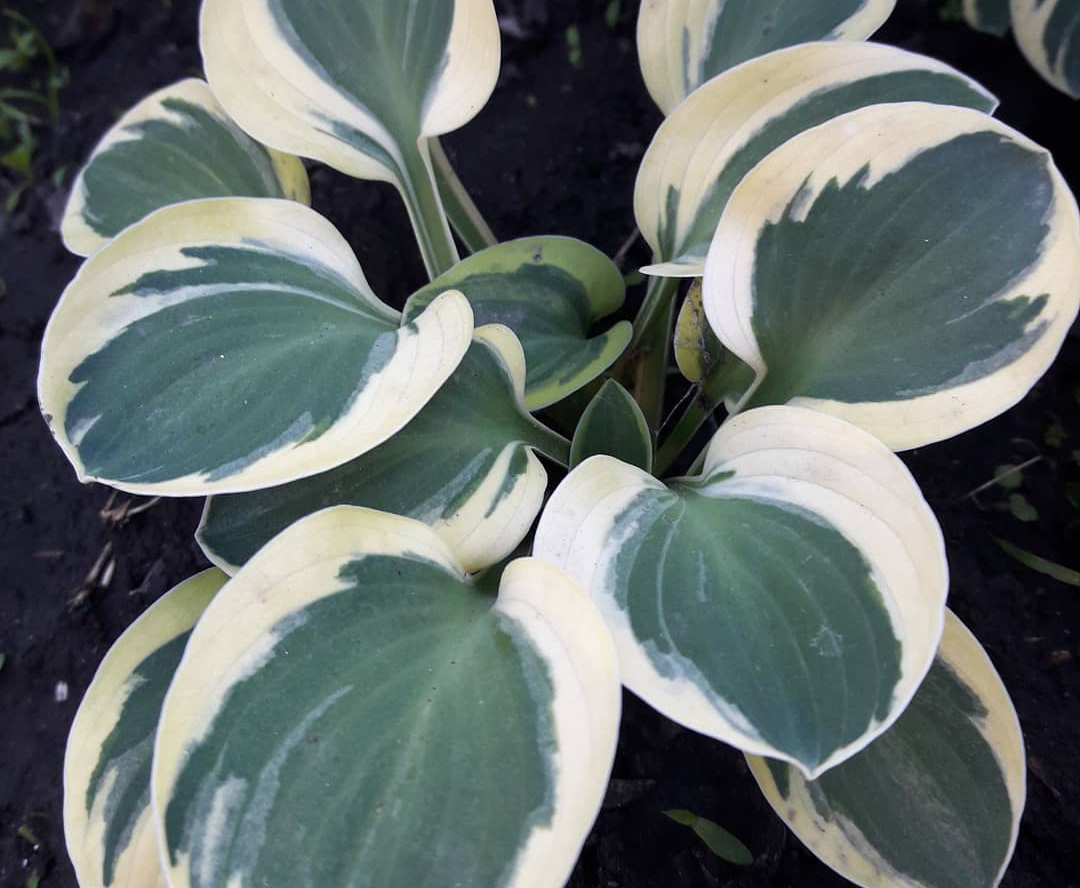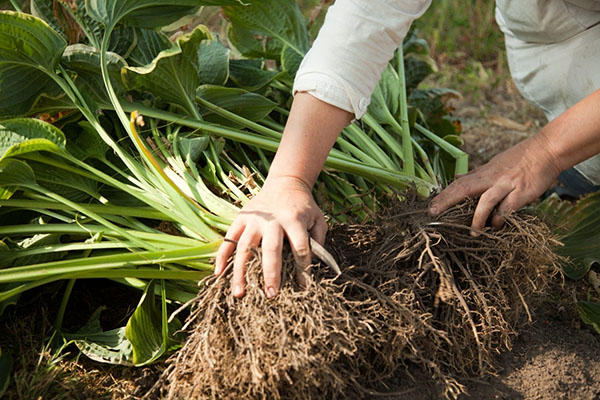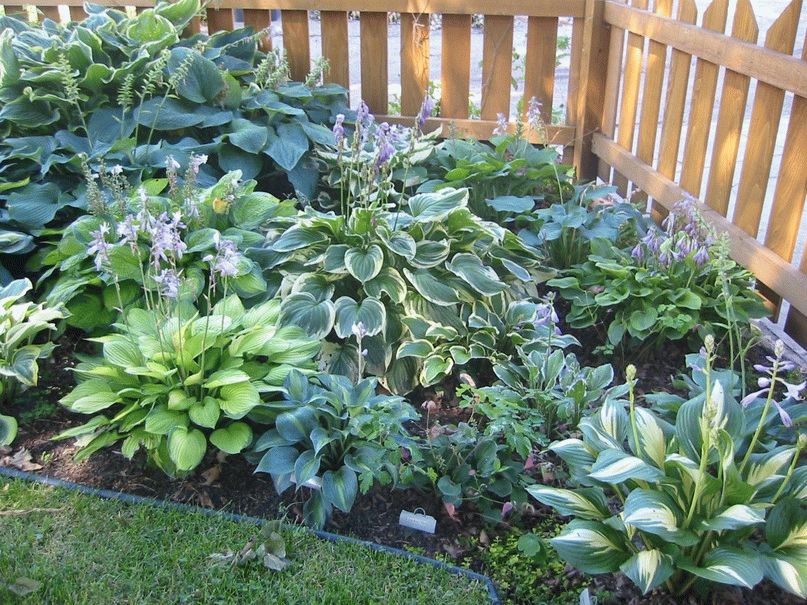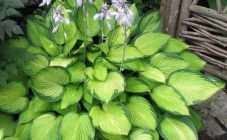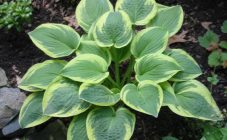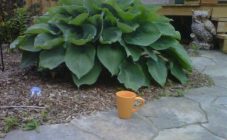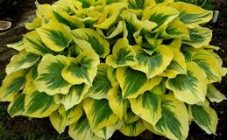Content:
An ornamental perennial deciduous plant called the Mouse Ears hosta belongs to the Liliaceae family. This variety comes from Asia (China and Japan) and is referred to in most sources as the Blue Mouse hosta variety. In English, it is spelled like this: host blue mouse ears, which means “blue mouse ears”.
In principle, this name fully corresponds to the actual shape of the flower, resembling the ears of a blue mouse. The rounded leaves of the plant are perfectly combined with large inflorescences and white flowers. The flowering period of miniature hosta is July, August, however, its decorative properties are preserved after this time.
Due to their attractive shape and color, hosta bushes fit well into modern flower beds and flower ensembles.
The considered decorative culture can be used to create complex bouquets made from a combination of leaves and flowers of various classes.
Description and characteristics
Providing a complete description of this type of herbaceous plants, let us pay attention to its following details and features:
- The leaf plate of the hosta The ear of the blue mouse is quite dense, resembling rubber in structure.
- Its color can be described as a combination of blue plus green; there are small notches along the even edges of the leaves.
- Their shape is cupped, differing, depending on the age of the plant (first oval, and with the onset of maturity - almost round, ending with a slight sharpening).
- The dark green petiole of the decorative flower is rather small, but at the same time has sufficient strength.
- The shape of the flowers themselves is bell-shaped, and the color of the petals can vary over a wide range.
- They grow in brushes that form on a thick stem.
The leaves of the hosta Mouse plant can be up to 20 cm long, and their standard width is up to 10 cm. They are attached to the stem by means of short but strong petioles, forming a small rosette in the lower part. In different hosta species, their shape and coverage can vary over a fairly wide range (with or without edging, with a matte bloom or glossiness, etc.).
Dblue, and sometimes lilac or white flowers of an ornamental plant are collected in small racemose inflorescences of regular shape.
Agrotechnics
A place for planting this variety of ornamental grasses is usually chosen in a shaded part of a garden or vegetable garden, for short periods of time illuminated by the sun's rays. The so-called "variegated" variety of hosts belongs to the category of especially light-loving species of this culture. But they all equally need reliable protection from drafts and strong gusts of wind.
Reproduction
These plants are propagated by the method of dividing the bush or by cuttings known to all. Mature shrubs undergo the division procedure either in early spring (before May), or in the fall season, which falls in September.But before that, the plant in the ground is watered abundantly, and then it is dug up and prepared for cutting.
The bush removed from the ground is divided into parts in such a way that on each branch there are 1-2 rosettes of leaves. The parts obtained after dividing are immediately planted at the place of their future cultivation. If the hosta is planted by cuttings, this procedure can be carried out throughout the summer season. For this, the following operations are performed:
- First, young shoots are separated from the plant bush, from which leaves are then removed by a third of their length.
- After that, each stalk is planted in a place prepared in advance for it.
- At the final stage of work, the appendages are covered with used plastic bottles.
At the end of planting operations, you should wait a couple of weeks until young cuttings take root in the ground, after which you can remove their shelter.
Planting and leaving
The plot selected for breeding hosts is first completely dug up, after which a bucket of humus and mineral fertilizers are introduced into it per unit of sown area. Then, at a distance of about 30-50 cm, small pits are dug out, corresponding in size to the root system of the plant.
Further, drainage is made at their bottom, after which the previously thrown back earth is poured there. After that, a bush with well-spread roots is placed in it, which are then covered with the same garden soil. At the end, it is carefully compacted, after which it remains to water abundantly and mulch the planting zone.
Everyday caring for growing hosta bushes comes down to standard procedures, these are:
- Timely watering of growing grass.
- Weed weeding.
- Feeding with organics or minerals.
Add to this the obligatory mulching with humus, which allows you to save moisture and provides favorable soil conditions for growth. The host does not need autumn pruning; at this time, some peduncles are usually removed. She also does not need a protective shelter from frost, since this culture does not die even at temperatures down to -40 ° C.
Advantages and disadvantages
The following properties are considered the undoubted advantages of this decorative type:
- An attractive look that allows the host to be used in landscaping.
- High frost resistance.
- Ease of reproduction and care.
- Versatility of application.
In conclusion, we note that no shortcomings as such were found in this ornamental variety of herbaceous plants.
At the same time, to its advantages should be added the possibility of planting grass along the banks of reservoirs and along walking paths. In addition, this type is often used in the arrangement of garden rock gardens.
